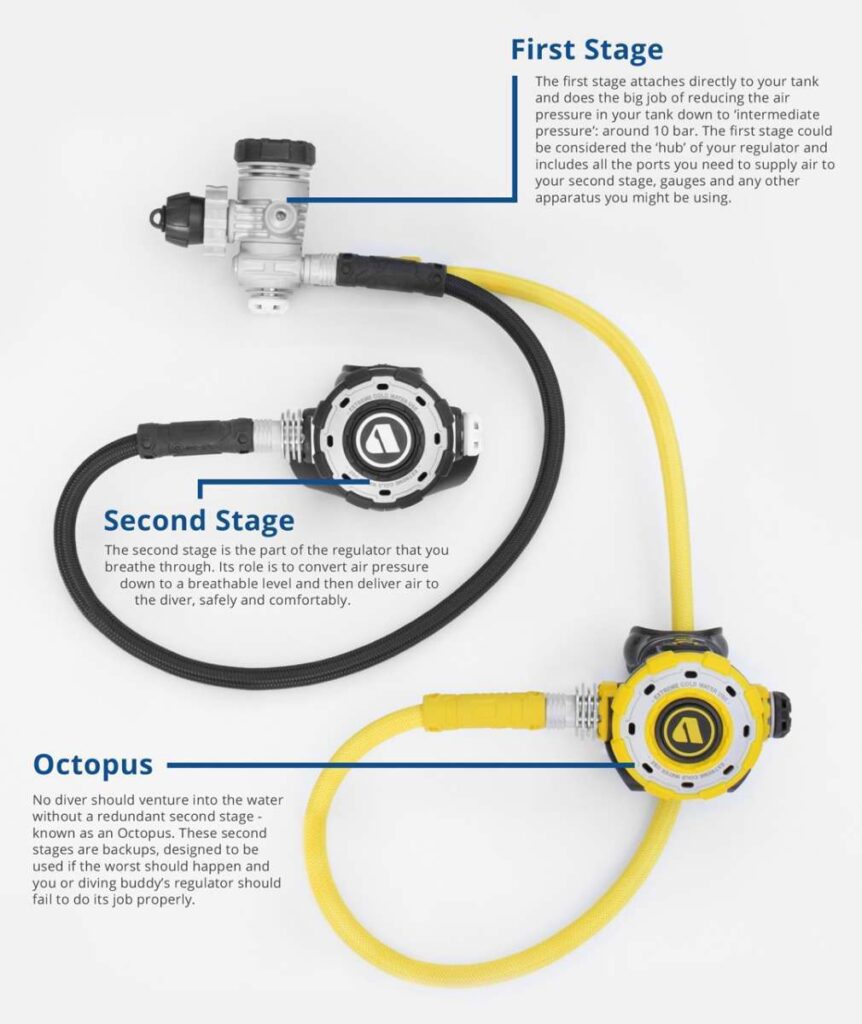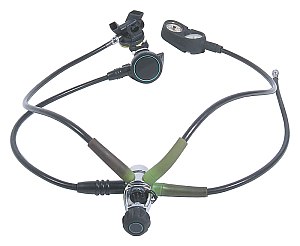
Are you an avid scuba diver? If so, you understand the importance of caring for and storing your scuba diving regulators to ensure their longevity and optimal performance. In this article, we will guide you through the essential steps of proper care and storage, helping you maintain your regulators in top condition for countless underwater adventures. So, let’s dive in and discover how you can keep your scuba diving regulators in tip-top shape!
Scuba Diving Regulators: A Guide to Proper Care and Storage
Scuba diving regulators are essential equipment that ensure the safe delivery of air while diving underwater. Taking proper care of your regulators not only extends their lifespan but also ensures your safety while exploring the depths. In this comprehensive guide, we will walk you through the regular maintenance routines, inspection procedures, servicing requirements, and storage tips for your scuba diving regulators. By following these recommendations, you can enjoy worry-free dives and prolong the life of your valuable equipment.
Regular Maintenance
Regular maintenance is crucial to keep your scuba diving regulators in optimal condition. By incorporating routine cleaning, inspection, servicing, and part replacement into your maintenance schedule, you can prevent potential malfunctions and maintain the performance of your regulators for years to come.
Cleaning
Cleaning your regulators after each dive is essential to remove saltwater, sand, and debris, which can hinder their performance and lead to corrosion. Here are the steps to properly clean your regulators:
- Rinsing with Fresh Water: Start by thoroughly rinsing your regulators in fresh water to remove any saltwater or other contaminants. Pay special attention to the mouthpiece, hoses, and connections.
- Drying: After rinsing, allow your regulators to air dry completely. Make sure all parts, including hoses and fittings, are dry before storing them to prevent the growth of mold or bacteria.
- Disinfecting: Periodically disinfecting your regulators helps eliminate any harmful microorganisms that may have accumulated during dives. Follow the manufacturer’s instructions and use a regulator-safe disinfectant.
- Avoiding Harsh Chemicals: When cleaning your regulators, always use mild, non-abrasive cleaning solutions. Harsh chemicals can damage the delicate components and rubber seals of your regulators.
Inspection
Regular inspections are essential to catch any potential issues or signs of wear and tear before they become major problems. Here are the steps to perform a thorough inspection of your scuba diving regulators:
- Visual Inspection: Start by visually inspecting all parts of your regulators. Look for any cracks, dents, or signs of damage that may affect their functionality. Pay close attention to the first stage, second stage, hoses, and connections.
- Checking for Cracks or Damage: Inspect the mouthpiece, hoses, and connections for any signs of cracks, abrasions, or loose fittings. These can compromise the integrity of your regulators and should be addressed promptly.
- Testing Connections: Ensure that all connections are secure and leak-free. Performing a bubble test by submerging your regulators in water and checking for any air bubbles can identify leakage issues.
- Inspecting O-rings: Inspect the O-rings for signs of wear, such as fraying or flattening. Replace any damaged O-rings to maintain a proper seal and prevent leaks.
Servicing
While regular maintenance is important, certain servicing tasks require the expertise of a qualified technician. It is recommended to have your scuba diving regulators professionally serviced at least once a year or as per the manufacturer’s guidelines. Here are some important aspects to consider when it comes to servicing your regulators:
- Understanding Schedule: Familiarize yourself with the manufacturer’s recommended servicing schedule for your specific regulators. Adhering to this schedule ensures that your regulators receive the necessary attention and adjustments.
- Choosing a Qualified Technician: When selecting a technician for regulator servicing, ensure they are certified and experienced in servicing the brand and model of your regulators. This guarantees that the servicing procedures are performed correctly and in accordance with the manufacturer’s standards.
- Necessary Tools: A qualified technician will have specialized tools and equipment required for disassembling, cleaning, and adjusting your regulators. These tools ensure a thorough and proper service is conducted, optimizing the performance of your equipment.
- Recommended Servicing Procedures: During the servicing process, the technician will inspect and clean all components, replace worn parts, adjust the first and second stage settings, and conduct functional tests to ensure proper performance. Following the manufacturer’s recommended servicing procedures helps maintain the reliability and safety of your regulators.
Replacing Parts
Over time, certain components of your scuba diving regulators may wear out and require replacement. Identifying these worn parts and using authentic replacement components is essential to ensure the optimal functioning of your regulators. Here are the steps to follow when replacing parts:
- Identifying Worn Components: Regularly inspect your regulators to identify any worn or damaged parts. Common components that may need replacement include O-rings, mouthpieces, hoses, and exhaust valves.
- Choosing Authentic Replacement Parts: When purchasing replacement parts, always choose authentic components from the manufacturer or authorized dealers. Generic or counterfeit parts may compromise the performance and safety of your regulators.
- Proper Installation: Follow the manufacturer’s instructions or consult a qualified technician to ensure proper installation of the replacement parts. Improper installation can lead to leaks or malfunctioning regulators, putting you at risk during dives.
- Testing for Functionality: Before using your regulators, conduct a functional test to ensure that all the replaced parts are functioning properly. Perform a thorough inspection and conduct a bubble test to check for any leaks or abnormalities.

This image is property of www.scubadivermag.com.
Storage
Proper storage of your scuba diving regulators is essential to maintain their performance and extend their lifespan. Here are some important considerations for storing your regulators:
Rinsing Before Storage
Before storing your regulators, rinse them with fresh water to remove any saltwater or debris that may have accumulated during dives. This prevents corrosion and ensures that no residues are left behind.
Drying Thoroughly
After rinsing, make sure to dry your regulators thoroughly. Disassemble all detachable parts, such as the mouthpiece and hoses, and allow them to air dry completely. Damp conditions can promote the growth of mold or bacteria, which can compromise the integrity of your regulators.
Protecting from Dust and Debris
When storing your regulators, keep them in a protective case or bag to prevent dust, dirt, and debris from accumulating on them. This helps maintain the overall cleanliness and functionality of your regulators.
Avoiding Extreme Temperatures
Avoid storing your regulators in extreme temperatures, such as hot car trunks or freezing environments. Extreme heat or cold can damage the delicate internal components of your regulators and affect their performance.

This image is property of www.scuba.com.
Travel Considerations
If you plan to travel with your scuba diving regulators, it’s important to consider certain factors to ensure their protection and compliance with airline regulations.
Ensuring Proper Protection
Invest in a sturdy regulator bag or case that provides adequate protection during transit. This helps safeguard your regulators against impacts and ensures that they remain secure and undamaged.
Checking Airline Regulations
Familiarize yourself with the specific regulations and guidelines of the airlines you will be traveling with. Some airlines may have restrictions on carrying scuba equipment or may require specific packaging or documentation for transporting regulators.
Packing and Transporting
When packing your regulators, disassemble them and pack each component securely. Use padding or bubble wrap to protect delicate parts and prevent any movement during transport. Ensure that the bag or case is securely closed and labeled as fragile.
Preventing Damage during Transit
To prevent damage, avoid packing your regulators with heavy or sharp objects that could potentially cause harm. Handling your regulators with care during transit minimizes the risk of accidental bumps or impacts that may compromise their functionality.

This image is property of www.deepbluedive.com.
Emergency Preparedness
While proper care and maintenance can prevent most issues with your scuba diving regulators, it’s always important to be prepared for unexpected situations that may arise during your dives. Here are some essential tips for emergency preparedness:
Carrying Spare Parts
Pack a small kit with commonly needed spare parts, such as O-rings and mouthpiece retainers. These can be easily replaced in case of failure during a dive, allowing you to continue your underwater adventure.
Knowing Maintenance Basics
Familiarize yourself with basic regulator maintenance and troubleshooting techniques. Understanding how to perform simple adjustments, like changing intermediate pressure settings or clearing second stage free flows, can help you address minor issues underwater and potentially prevent a dive from being cut short.
Identifying Common Issues
Educate yourself on common regulator issues, such as free-flow or difficulty breathing. Knowing the signs and symptoms of these problems can help you identify and address them promptly, ensuring your safety and comfort while diving.
Troubleshooting Techniques
In case of minor malfunctions, practice troubleshooting techniques, such as purging and breathing from your alternate air source. These skills come in handy when faced with an unexpected situation underwater and can help you regain control and continue your dive safely.

This image is property of www.scuba-diving-smiles.com.
Recommended Accessories
To enhance the care, protection, and convenience of your scuba diving regulators, consider investing in the following recommended accessories:
Regulator Bag
A regulator bag not only provides a safe and organized storage solution but also offers additional protection during transport. Look for a bag with padded compartments and durable construction to ensure the safety of your regulators.
Mouthpiece Cover
A mouthpiece cover protects your regulator’s mouthpiece from dirt, sand, and other contaminants. It also helps maintain proper hygiene and prevents the growth of mold or bacteria.
Dust Cap
A dust cap safeguards your regulator’s first stage inlet from dust, sand, debris, and moisture when it’s not in use. It prevents potential damage and maintains the integrity of the internal components.
Regulator Holder
A regulator holder provides a convenient and secure way to store your regulators when they are not in use. Look for a holder that keeps the regulators upright and allows proper airflow for drying.

This image is property of 97208546.m3nodes.com.
Conclusion
By following the outlined steps and recommendations for proper care and storage of your scuba diving regulators, you can ensure their longevity, functionality, and your safety underwater. Regular cleaning, thorough inspections, professional servicing when needed, and timely replacement of worn parts are essential for extending the lifespan of your regulators. Proper storage, consideration of travel requirements, and emergency preparedness further enhance their performance and reliability. By prioritizing the maintenance and storage of your scuba diving regulators, you can enjoy countless memorable dives in the fascinating underwater world.






